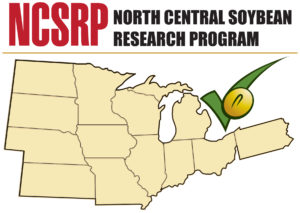Soybean Sudden Death Syndrome (SDS): Integrated Management Tactics for SDS, FvTox1 Expression and SDS Hyperspectral Sensing
Soybean Sudden death syndrome (SDS) is known to be one of the most yield limiting soybean diseases in the United States. SDS is caused by a soil borne pathogen (F. virguliforme) which results in a two-stage symptom development: i. root necrosis followed by ii. foliar symptoms of interveinal chlorosis and necrosis, that occurs late in the growing season.

Research Problem and Purpose
- Resistance for SDS is partial and complex. There have been varied results in the current management strategies used for SDS, and as such, it is hard to provide suitable recommendations to producers on how to effectively manage the disease. Our lab hopes to develop and provide growers with an integrated, effective, and economic management program for SDS.
- The foliar symptom phase of SDS is observed to be the most important SDS stage for yield loss. A toxin known as FvTox1 is known to be the main virulence factor for SDS foliar development; this toxin is said to be translocated from the infected roots to the shoots. Hence, we aim to track the expression of FvTox1spatially and temporally. This could potentially serve as a genetic resource for the advancement of SDS foliar resistance.
- Generally, the foliar symptoms of SDS occur late in the season, and so identifying infected plants early in the growing season prior to the appearance of visible symptoms would be beneficial to growers. So, from this study, we also hope to identify a spectral signature that is associated with SDS infected plants prior to foliar development using hyperspectral sensing.
Research support by:

